 Official Government Website
Official Government WebsiteThousand Springs State Park
PARK UPDATE
Campground: Water is on. Upper Loop is open year-round, lower loop will be closed December 1st through February 28th.
Thousand Springs State Park Visitor Center Hours:
Winter Hours: November 1- February 28
Friday, Saturday, & Sunday: 9:00 AM–3:00 PM
Monday through Thursday: Closed
The winter season is November 1 through February 28. During the winter months, the Thousand Springs Visitor Center is open three days per week, Friday through Sunday from 9 am to 3 pm.
Our Park units:
Billingsley Creek, Kelton Trail, Box Canyon, and Crystal Springs are open year-round for day-use from 7am to 10pm.
Malad Gorge day use is open. The back gate is closed for the season to motor vehicles, walk-ins are welcome.
Niagara Springs day use area is closed for the season to motor vehicles, walk-ins are welcome.
Ritter Island is closed for the season.
Park Reservations
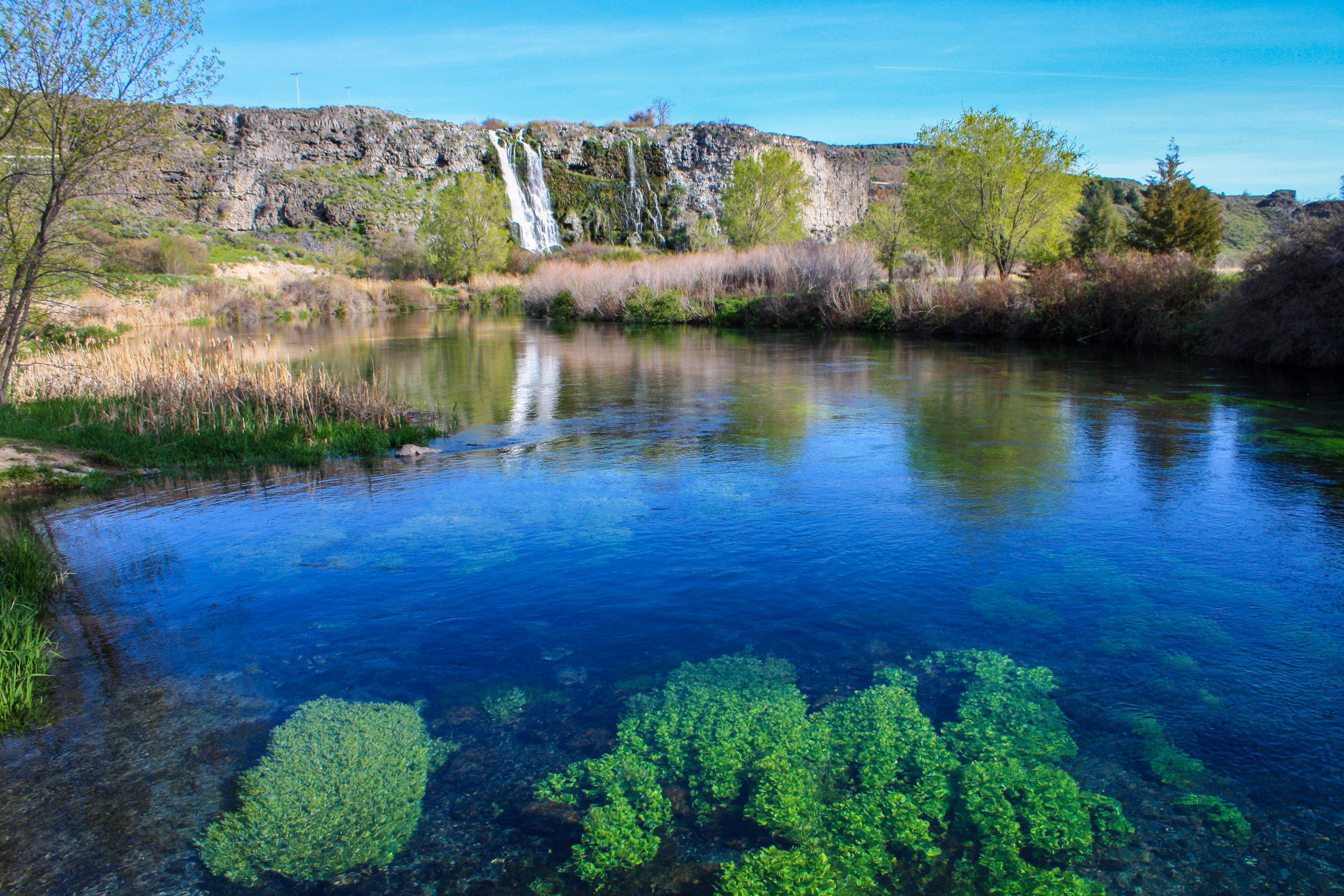
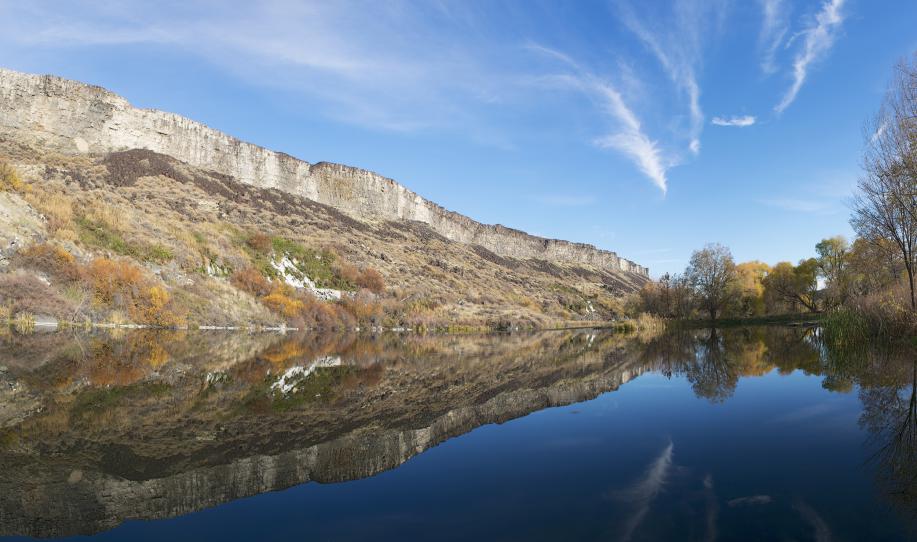
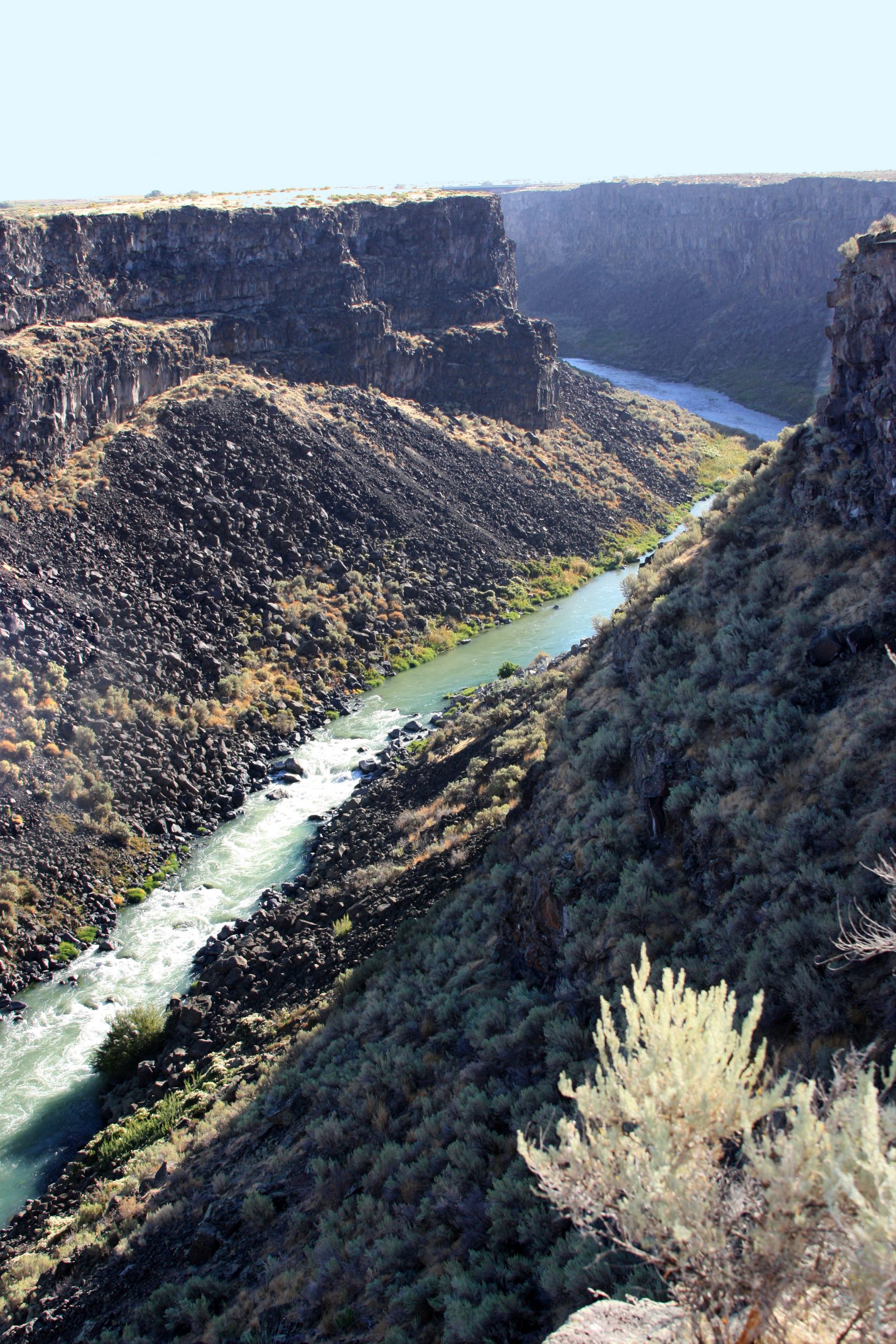
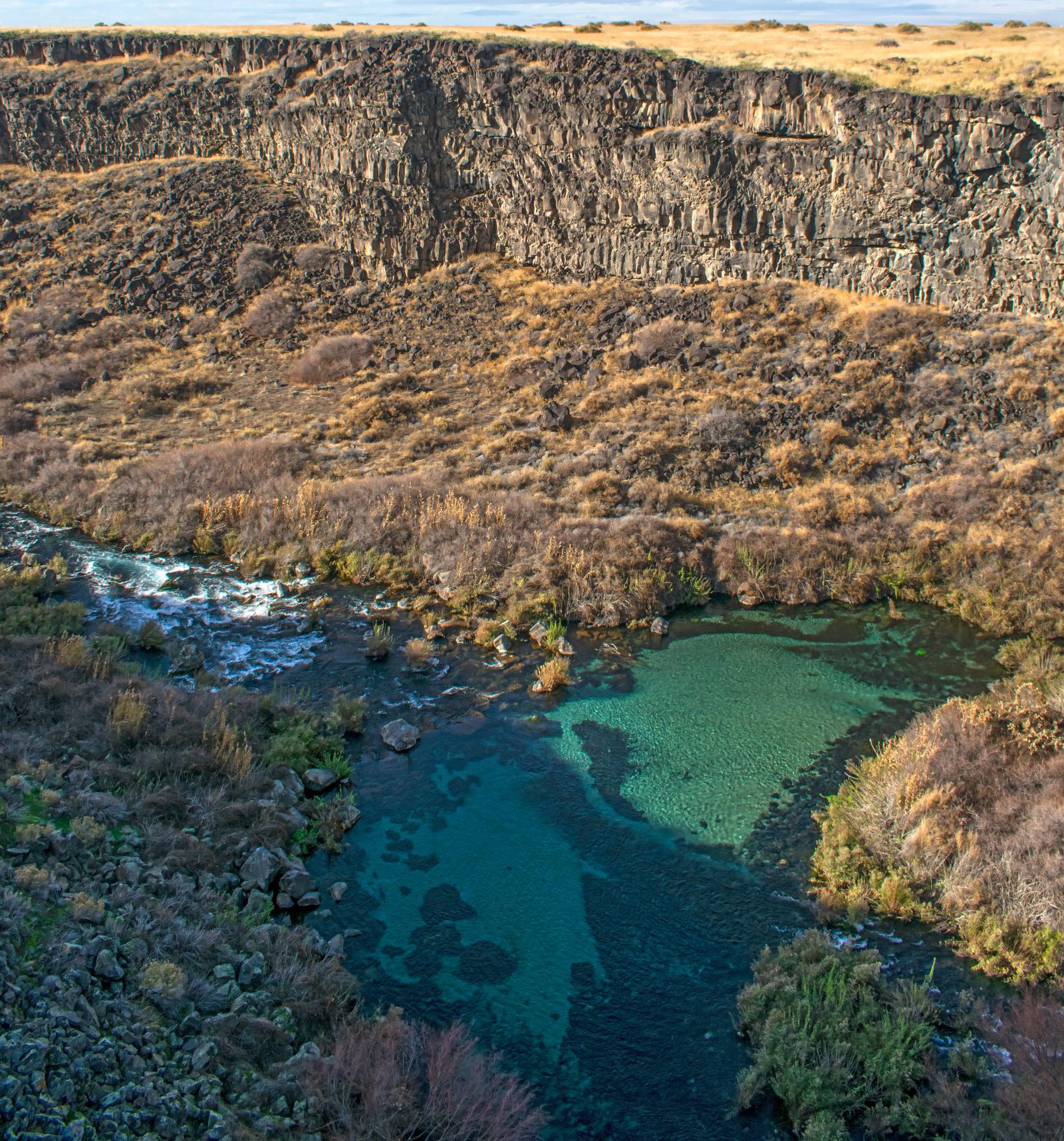
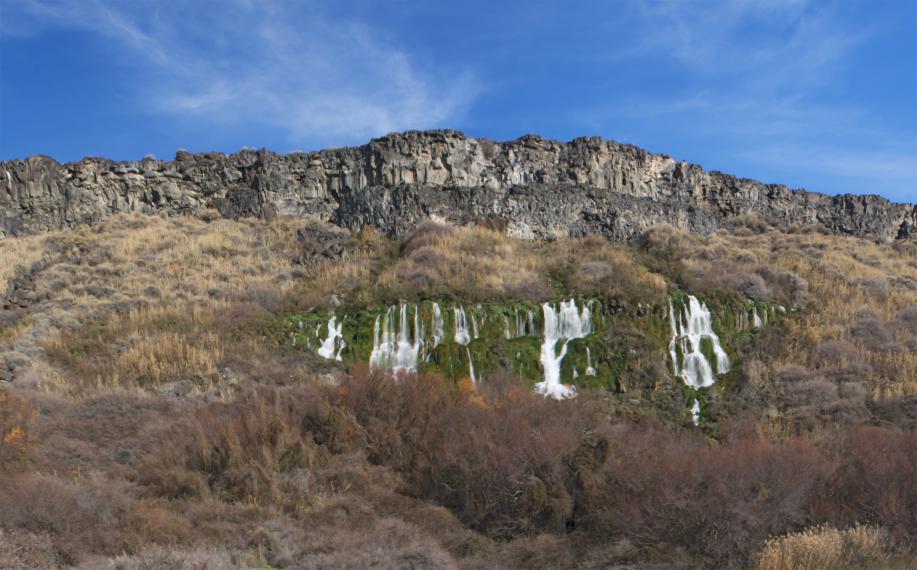
Additional Links
Follow Thousand Springs State Park on Facebook.
For more information about Hagerman Fossil Beds National Monument, please visit: www.nps.gov/hafo and follow on Facebook www.facebook.com/HagermanFossilBedsNPS.


Contact the Park
Street Address:
Hagerman, ID 83332
Mailing Address:
Hagerman, ID 83332
Phone:
Hours of Operation:
Upcoming Events
Thousand Springs State Park is a testament to why this rugged area of southern Idaho is called the Magic Valley. The park is divided into six units that are all within short driving distance of each other. Each unit offers a unique experience.
Visitors can explore the Oregon Trail at the Kelton Trail; hike and picnic at magnificent Malad Gorge; fish, view wildlife or ride horses in the indoor arena at Billingsley Creek; step back in time and tour historic agricultural structures at Ritter Island; hike in Box Canyon Nature Preserve and watch bald eagles; picnic or teach the kids to fish at Niagara Springs.
- Hike
- Bike
- Horse
- ADA Campsite
Thousand Springs State Park Hagerman Fossil Beds National Monument Visitor Center
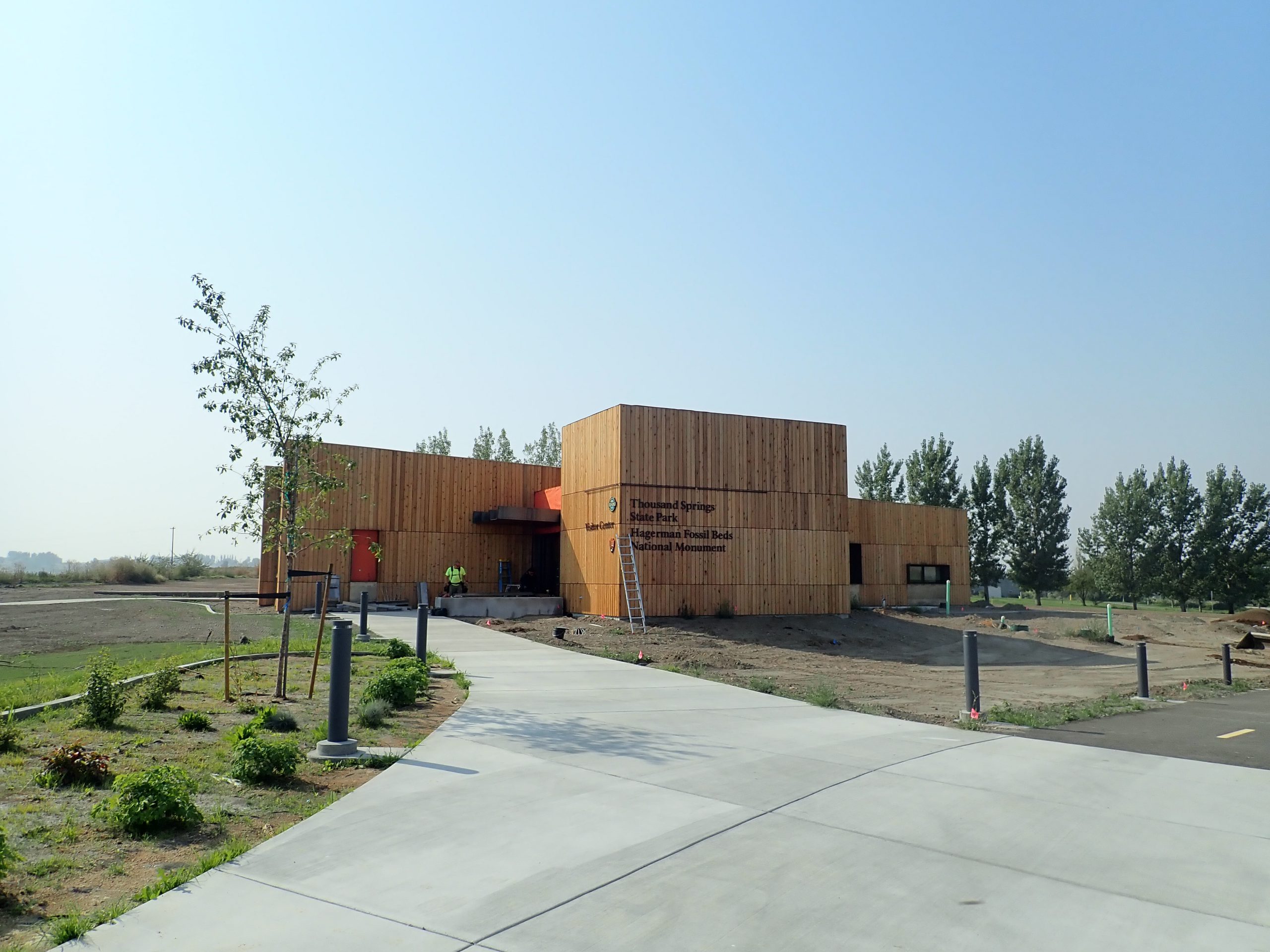
Located at our Billingsley Creek Unit, the visitor center enhances recreational and historical offerings for Thousand Springs State Park and Hagerman Fossil Beds National Monument by putting rangers and resources in a single location.
Check out the Thousand Springs State Park brochure and map or learn more about the park’s geology!
Billingsley Creek
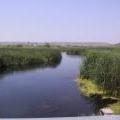
Before it became an Idaho State Park, it was known as the Emerald Valley Ranch, used primarily for agriculture.
You can enjoy Billingsley Creek from sunrise to sunset. The park offers spectacular wildlife viewing opportunities, an indoor horse-riding arena, fishing, visitor center, RV campground, and featured events throughout the year.
Earl M. Hardy Box Canyon Springs Nature Preserve

Box Canyon Springs Flows at a rate of 180k gallons per minute. The natural area offers view of the springs, a primitive hiking trail, and a 20ft waterfall. The area is also a great place to see bald and golden eagles in the winter. The road is paved for easy access to the overlook.
Malad Gorge
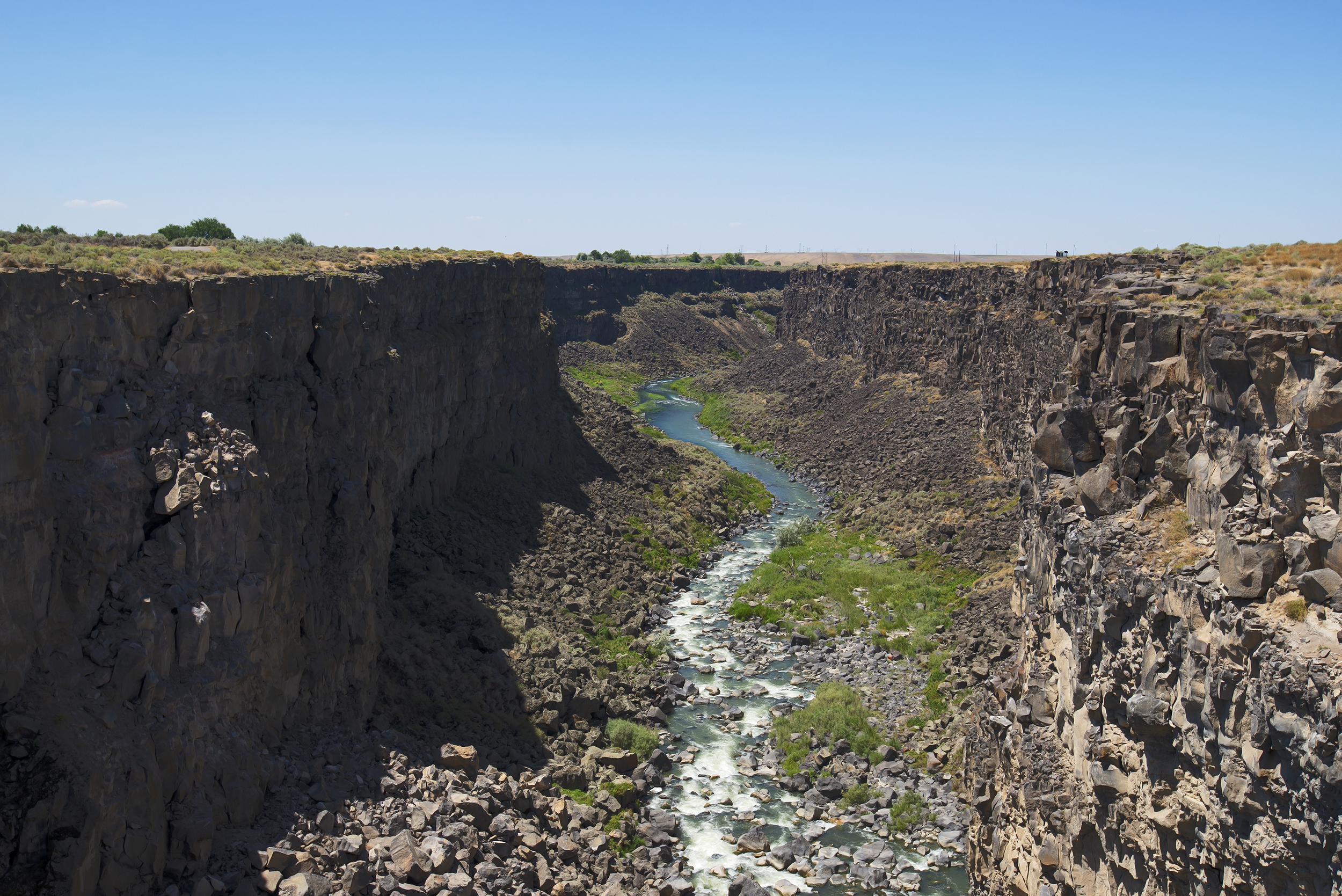
This 451-acre park is located just off Interstate 84 at the Tuttle exit. People pass the park in an eye blink, never suspecting the spectacular canyon views that await them just a mile off the highway. Malad Gorge is open for hiking, picnicking and day outings. Malad Gorge gate is open from 8:00 AM – 4:00 PM.
The Magnificent Gorge
The Malad River crashes down stairstep falls and into the Devils Washbowl, then cuts through a beautiful 250-foot gorge on its way to the Snake River, 2-1/2 miles downstream. Views of the gorge are best from the sturdy bridge that crosses the canyon. You can take a short hike to discover nearby fingers of the gorge where crystal-clear springs produce ponds and streams.
Ritter Island
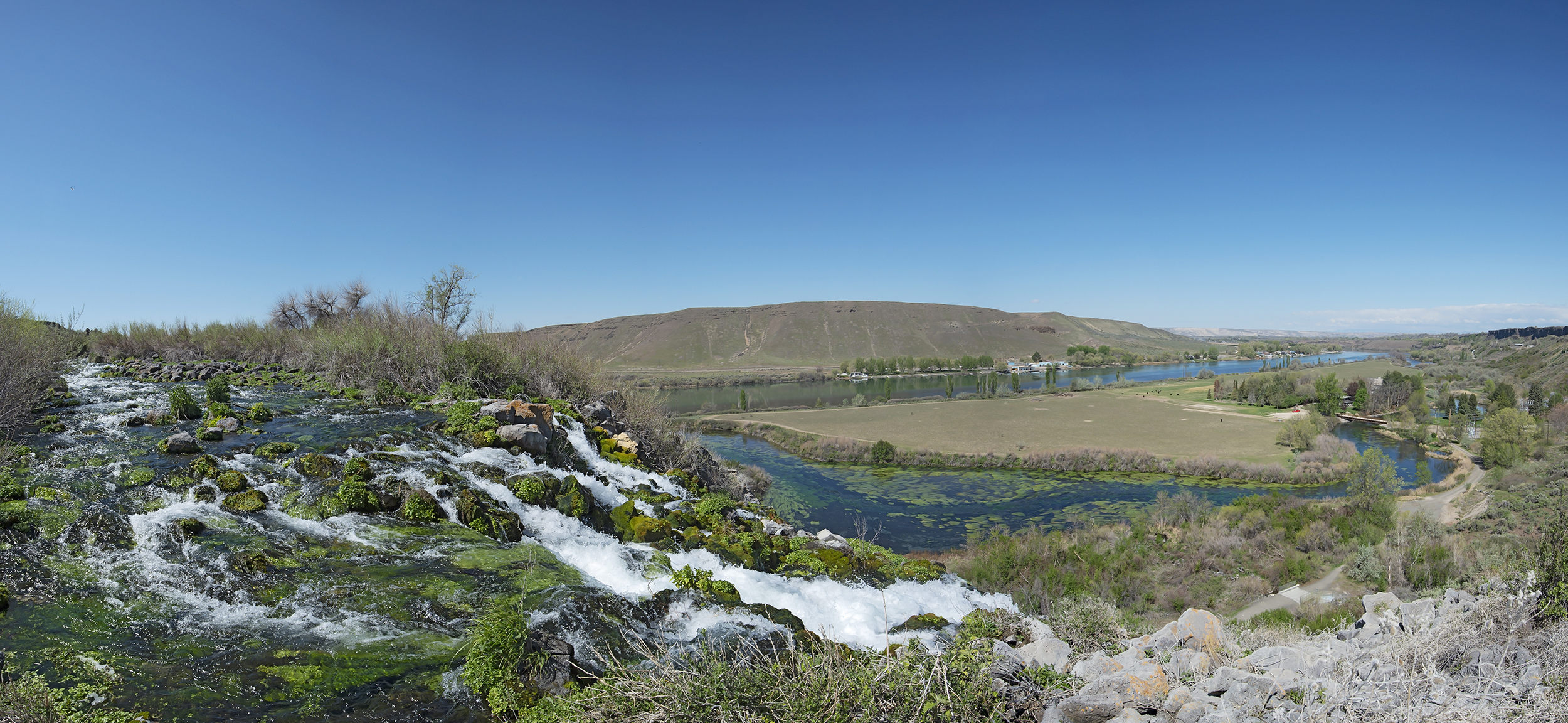
The island allows visitors to enjoy the springs, an abundance of wildlife, and to step back in time touring the historic buildings. There are three rental homes that can be reserved. Wedding Venue can be reserved by contacting the park directly. The island is open Memorial Day weekend through Labor Day weekend and closed the rest of the year. The road is narrow and steep. We advise you not to risk it in a motorhome or while pulling a trailer. There is very limited parking available and no rv/trailer turnaround.
Kelton Trail
The Kelton Road offers views of the abutments for the bridge that carried wagons traveling the Oregon Trail. From about 1864 to 1883 this was on the regular route that carried mail, freight and passengers between Boise and the railhead at Kelton, Utah. The trail had so much traffic that grooves were cut into the rocks, but by July 1884, a traveler on the old route noticed that “grass grows over the defunct overland Kelton stage road where a weary traveler once traveled in clouds of dust…”
Niagara Springs
Tumbling down the canyon side at 250 cubic feet per second, Niagara Springs is a sight you won’t soon forget. The churning water is the icy blue of glaciers. The springs are a National Natural Landmark and part of the world-famous Thousand Springs Complex along the Snake River.
The park provides your best opportunity to drive into the 350-foot-deep canyon, but be cautious: The road is narrow and steep. We advise you not to risk it in a motorhome or while pulling a large trailer.
Crystal Springs Lake
This seven-acre lake is a popular fishing spot for area anglers. Picnic tables and shade trees also provide recreational opportunities for the non-fishing visitors. Birdwatchers can also view the large variety of waterfowl that migrate through and nest along the Snake River. Facilities include docks, picnic tables, and vault toilets.
- Auto Touring/Scenic Routes
- Charcoal Grills
- Fire Rings
- Group Picnic Shelter
- Indoor Restrooms
- Indoor Showers
- Picnic Areas
- Vault Toilets
General Accommodations
- Lodges/Houses
- RV Campsites
Billingsley Creek Campground
There is a 50-unit full hookup campsites located at the Billingsley Creek Unit of Thousand Springs State Park. Reserve your spot at Billingsley Creek Campground. Book online at parksandrecreation.id.gov or by calling our reservation desk at 1-888-922-6743.
Check-in 2:00 p.m. Check-out 1:00 p.m.
Idaho Parks & Recreation Rules
Motor Vehicles: ALL motor vehicles must display Motor Vehicle Entry Fee (MVEF) permit. Vehicles are to be used for ingress and egress only. All vehicles (ATV’s, UTV’s, OHV’s, SOHV’s, motorcycles, etc.) must be licensed and operated by licensed driver. Those under 18 MUST always wear a helmet. (IDAPA 26.01.20.150)
Parking: All motorized vehicles and trailers shall fit ENTIRELY within the paved parking spur. Any equipment that does not fit shall be parked in a designated parking area with a valid daily MVEF permit and pay the Extra Vehicle Fee. (IDAPA 26.01.20.200.08)
Campsite Capacity: Maximum capacity limits on each campsite are subject to each site’s design and size. Unless otherwise specified and provided the combined equipment and people fit within the designated camping area of the site selected, the maximum capacity will be one (1) family unit or a party of no more than eight (8) persons, two (2) tents and two (2) motor vehicles. No more than one (1) RV may occupy a site. Two (2) motorcycles are the equivalent of one (1) motor vehicle when determining campsite capacity. Each motorcycle will be subject to the MVEF. (IDAPA 26.01.20.200b) Tents must be on the tent pad or asphalt.
Pets: All pets must be on a leash no longer than 6’ at all times. No person may allow their pet to create a disturbance which might be bothersome to other users. Pets may not be left unattended. Pet owners are responsible for clean up after their pets. (IDAPA 26.01.20.175.09)
Firearms: No person may discharge firearms or other projectile firing devices such as slingshots and air-soft guns within any lands administered by the Department except in the lawful defense of person, persons, or property. (IDAPA 26.01.20.175.14)
Quiet Hours: 10:00 p.m. – 7:00 a.m. Park users are restricted from the production of noise that may be disturbing to other. This includes generators and radios. (IDAPA 26.01.20.175.03)
These rules apply to any persons visiting Thousand Springs State Park.
Ritter Island
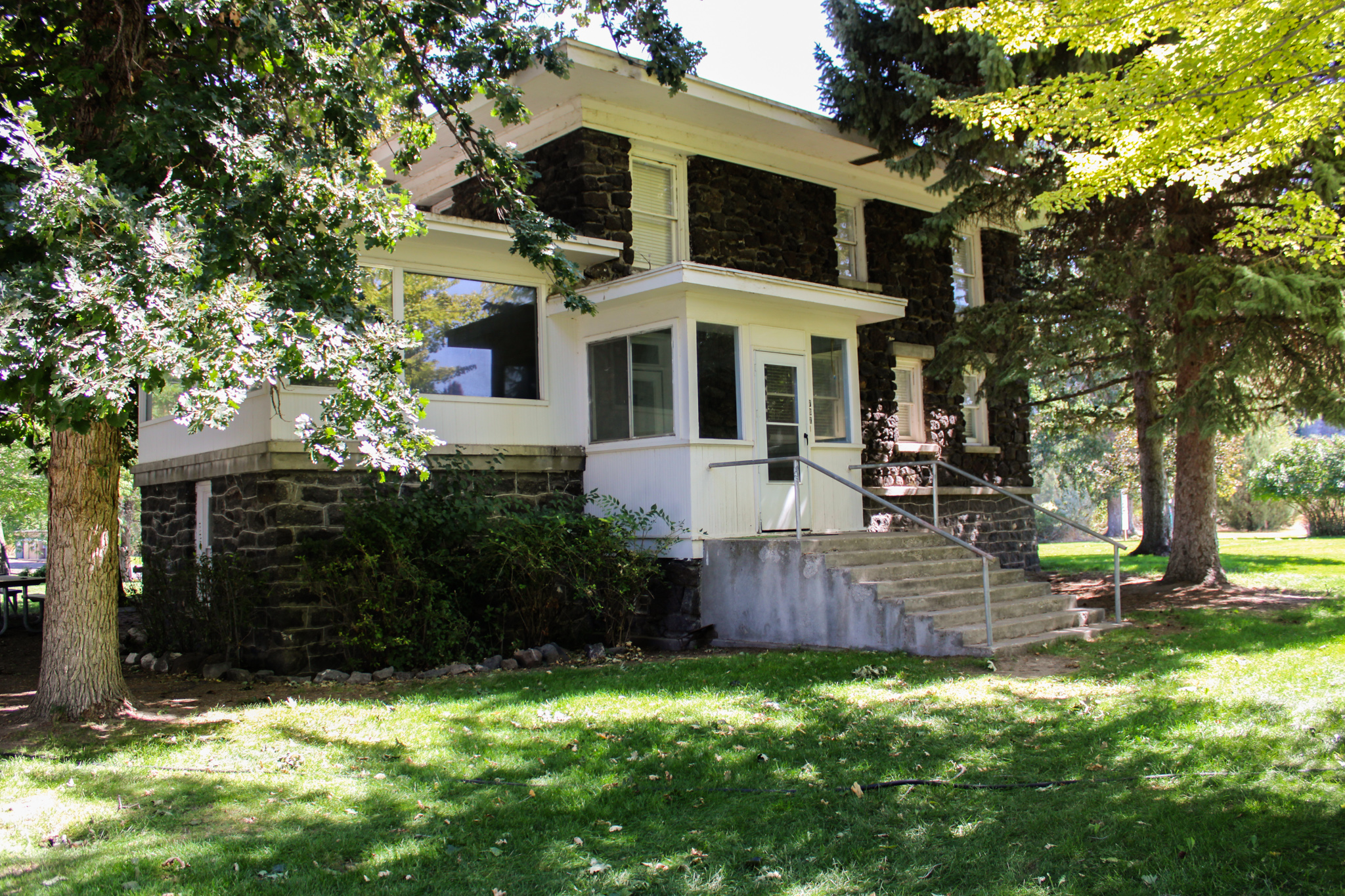
Stay the night at Thousand Springs! There are three historic overnight rental homes available at Ritter Island that can be reserved online at parksandrecreation.id.gov or by calling our reservation desk at 1-888-922-6743. Reserving the houses on Ritter Island are separate from the Ritter Island Wedding Venue. Contact Thousand Springs State Park directly to check availability of, or to reserve the Ritter Island Wedding Venue. The road is narrow and steep. We advise you not to risk it in a motorhome or while pulling a trailer.
The Rock House sleeps up to 10 people maximum.
Rental fees:
Resident: $300/night
Non-Resident: $330/night
Information about the Rock House
The Yellow house sleeps up to 4 people.
Rental fees:
Resident: $200/night
Non-Resident: $220/night
Information about the Yellow House
The Pink house sleeps up to 2 people and is ADA accessible.
Rental fees:
Resident: $200/night
Non-Resident: $220/night
Information about the Pink House
Group Use Areas
Group Use Areas at Niagara Springs and Malad Gorge can be reserved by contacting Thousand Springs State Park directly.
Group Use Permits are required.
Site fee is $50.00 per area/day. Plus a $25.00 reservation fee.
MVEF fees are $7.00 per vehicle/day (fee waived with Idaho State Parks Passport).
Wedding Venue
The Wedding Venue at Ritter Island can be reserved by contacting Thousand Springs State Park directly. Reserving the Ritter Island Wedding Venue is separate from the Ritter Island Rental Houses. Houses on Ritter Island can be reserved online at parksandrecreation.id.gov or by calling our reservation desk at 1-888-922-6743.
Group Use Permit is required.
Site fee is $800.00 per day. Plus a $25.00 reservation fee. Fees are non-refundable.
MVEF fees are $7.00 per vehicle/day (fee waived with Idaho State Parks Passport).
The Thousand Springs State Park Visitor Center hours vary seasonally. Please call before your visit to check hours of operation.
Fall Hours September 4–October 31
Sunday and Monday: 9:00 AM–3:00 PM
Tuesday and Wednesday: Closed
Thursday-Saturday: 9:00 AM–3:00 PM
The fall season is the day after Labor Day through October 31. During the fall, the visitor center is open five days per week, Thursday through Monday from 9 am to 3 pm. The visitor center is closed on Tuesdays and Wednesdays.
Winter Hours November 1–February 28
Sunday: 9:00 AM–3:00 PM
Monday-Thursday: Closed
Friday and Saturday: 9:00 AM–3:00 PM
The winter season is November 1 through February 28. During the winter months, the Thousand Springs Visitor Center is open three days per week, Friday through Sunday from 9 am to 3 pm.
Spring Hours March 1–May 22
Sunday and Monday: 9:00 AM–3:00 PM
Tuesday and Wednesday: Closed
Thursday-Saturday: 9:00 AM–3:00 PM
The spring season is March 1 through the Thursday before Memorial Day. During the spring the visitor center is open five days per week, Thursday through Monday from 9 am to 3 pm. The visitor center is closed on Tuesdays and Wednesdays.
Summer Hours Memorial Day Weekend to Labor Day Weekend
Open 7 days a week: 9:00 AM–5:00 PM
Our Park units:
Billingsley Creek, Kelton Trail, Box Canyon, and Crystal Springs are open year-round for day-use from 7am to 10pm.
Malad Gorge day use is open year-round. The back gate is open Memorial Day weekend through Labor Day weekend. The back gate is closed the rest of the year to motor vehicles, walk-ins are welcome.
Niagara Springs day use area is open from the weekend after Memorial Day through Labor Day weekend. The park is closed the rest of the year to motor vehicles, walk-ins are welcome.
Ritter Island is open Memorial Day weekend through Labor Day weekend Thursday through Monday from 10am to 3pm, closed Tuesday and Wednesday, and closed the rest of the year.







